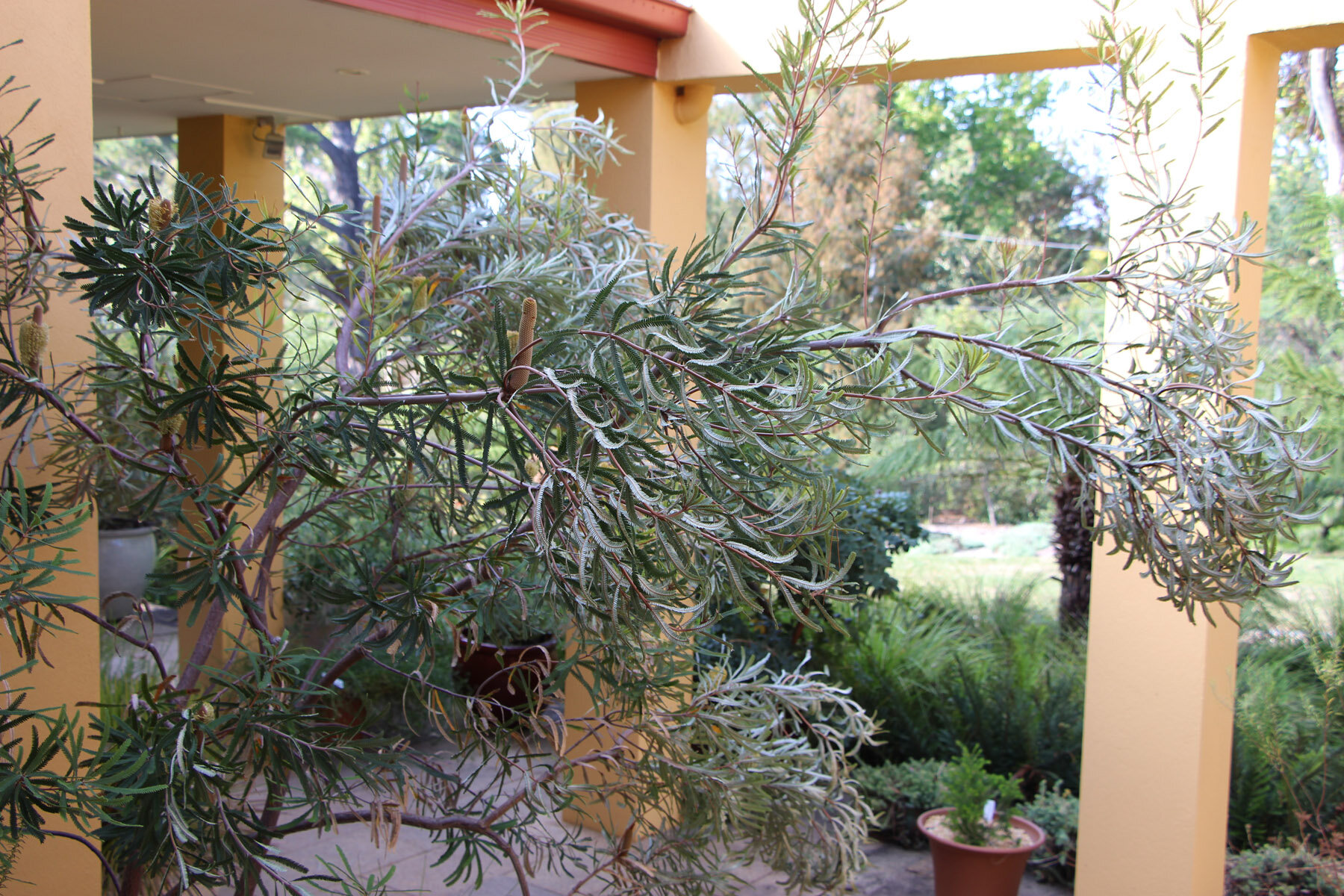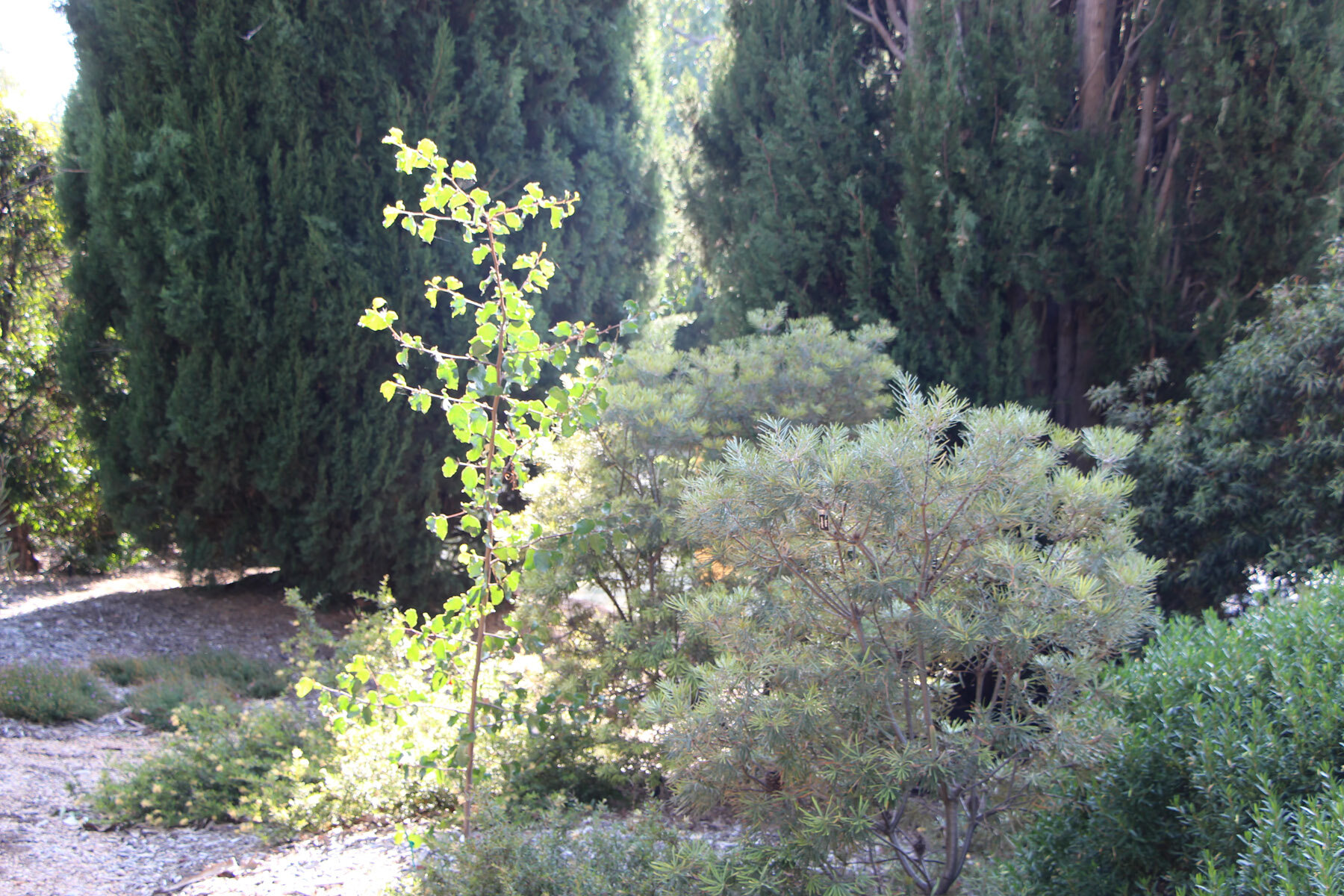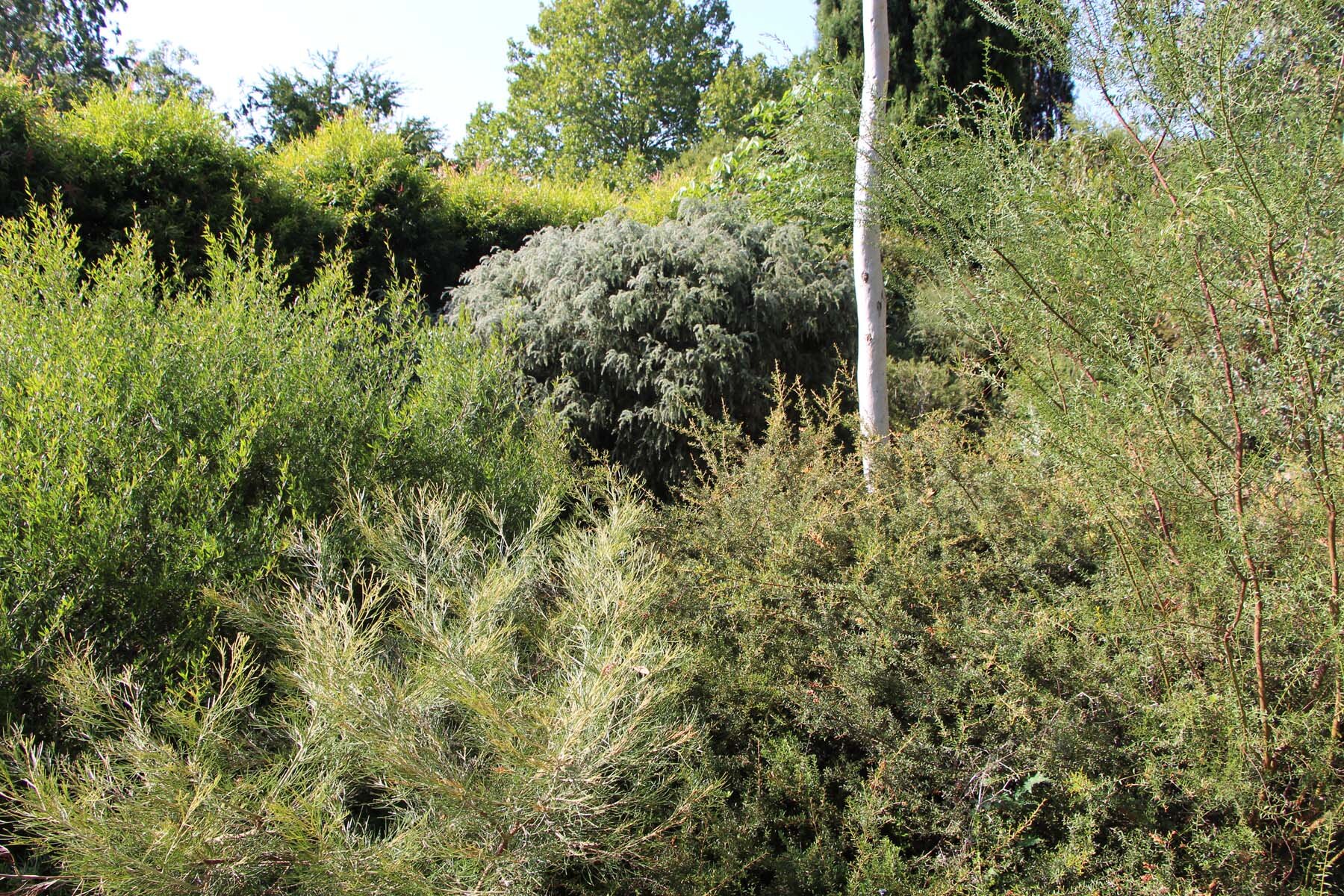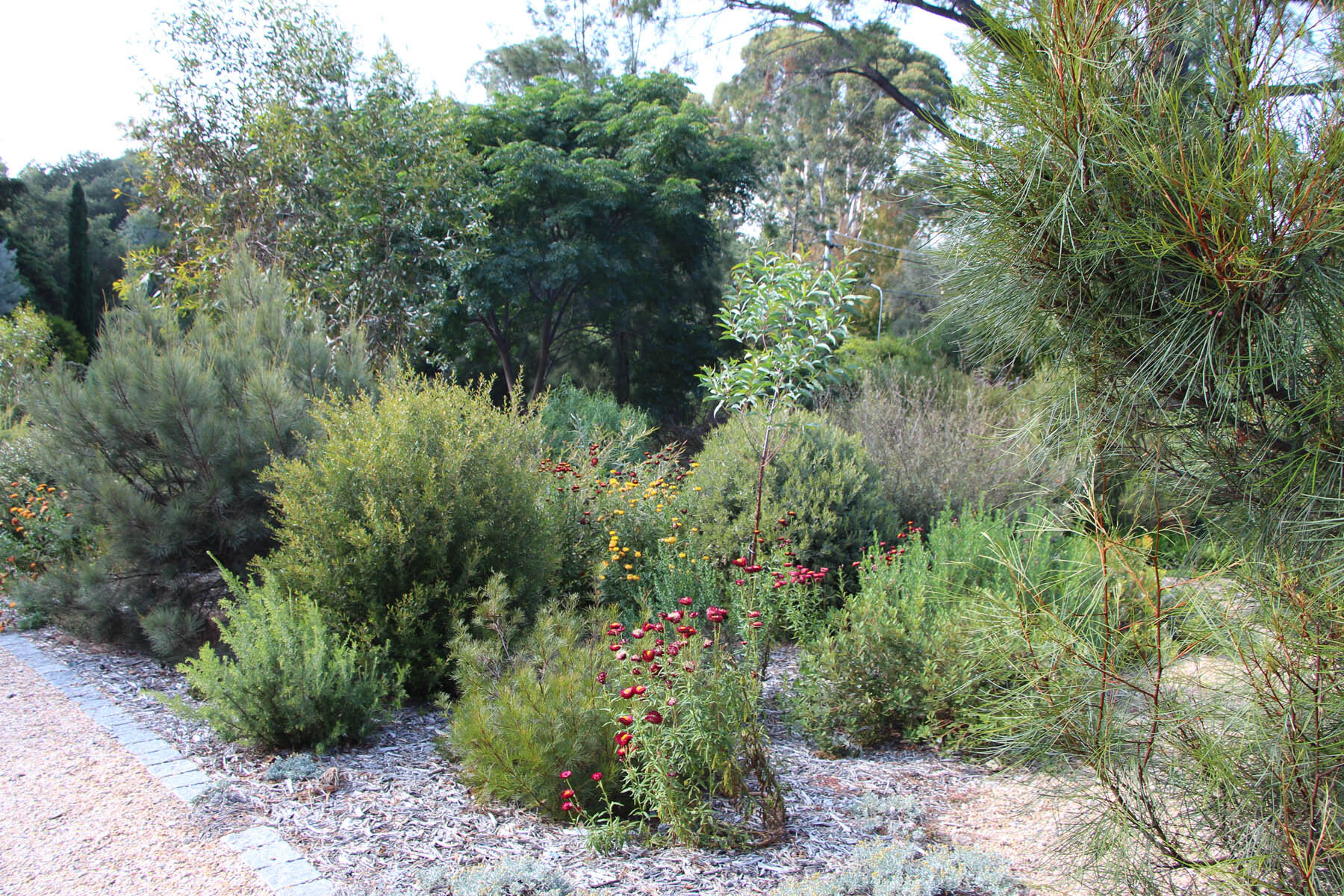Traceries and Layers in the Garden
Myoporum floribundum with Acacia cognata '‘Lime Magik’ on the left and Dianella tasmanica on the right
One of the most pleasing aspects of a garden is that you are always looking through layers of plants. You very rarely look at just one plant alone. Even a specimen tree has garden views behind it, which enhance its beauty. Very often you have an effect like a stained glass window, where you are seeing parts of a plant, interrupted by the tracery of the branches of another. You have to put together the picture of whole plant in your mind. As makers and admirers of stained glass windows know, this makes the complete picture in the mind’s eye more compelling.
The photo above shows the ‘Japanese’ effect of the tracery of branches of Myoporum floribundum. This plant has so many excellent features that it is a great choice for any garden. The shape of the branches is exquisite and only becomes more twisted with age. The leaves droop from the branches in a most artistic way and the white flowers arranged along the top of the branches emphasise the graceful lines of the limbs. Behind the myoporum is the strappy foliage of Dianella tasmanica and the vibrant colour of Acacia cognata ‘Lime Magik’.
The lax silver backed foliage of a potted Banksia brownii allows glimpses of the garden beyond and softens the vertical lines of the columns of the house. The brown candles of this banksia are an extra bonus.
Even a single flower can frame a view and add definition to the background beyond. Here two flowers can be both a focal point in their own right and a pointer to the garden behind the feature plant. Traceries of the linear foliage of Grevillea ‘Billy Bonkers’ (left) and the divided prickly foliage of Grevillea bipinnatifida ‘Jingle Bells’ (right) can offer you glimpses of the picture behind.
The sun can dramatically light up one plant in the garden, as it does here with Acacia denticulosa, (left)the Sandpaper Wattle. Looking more closely at the leaves (middle) rewards the viewer with marvellous patterns of veins, almost translucent, which add to the view behind. One of the most pleasing aspects of the Wax Grevillea, Grevillea insignis, is the fact that its leaves are translucent when the sun shines through them (right), revealing the pink rims and the fascinating patterns of veins in the prickly leaves. We try to catch sight of this grevillea when the sun shines through it and forms a beautiful contrast with the silver grey foliage of Melaleuca incana behind, itself lit up like a beacon by the sun.
These three photos show off the importance of layers in the garden. The traceries of the light branches of Acacia subulatus soften the rocks and shrubs behind (left). The fact that this wattle blooms virtually all year with blooms that open serially from top to bottom is an added advantage. The vertical accent of the white trunked Eucalyptus mannifera, or Brittle Gum, seems to anchor and arrange the rounded shapes of other shrubs in the garden (middle). In the right photo, the variety of foliage colours and shapes contrast with each other and form a harmonious whole. The only real colour, apart from shades of green, are the Xerochrysum bracteatum which spread themselves in the garden and hybridise freely providing different colours every year.










